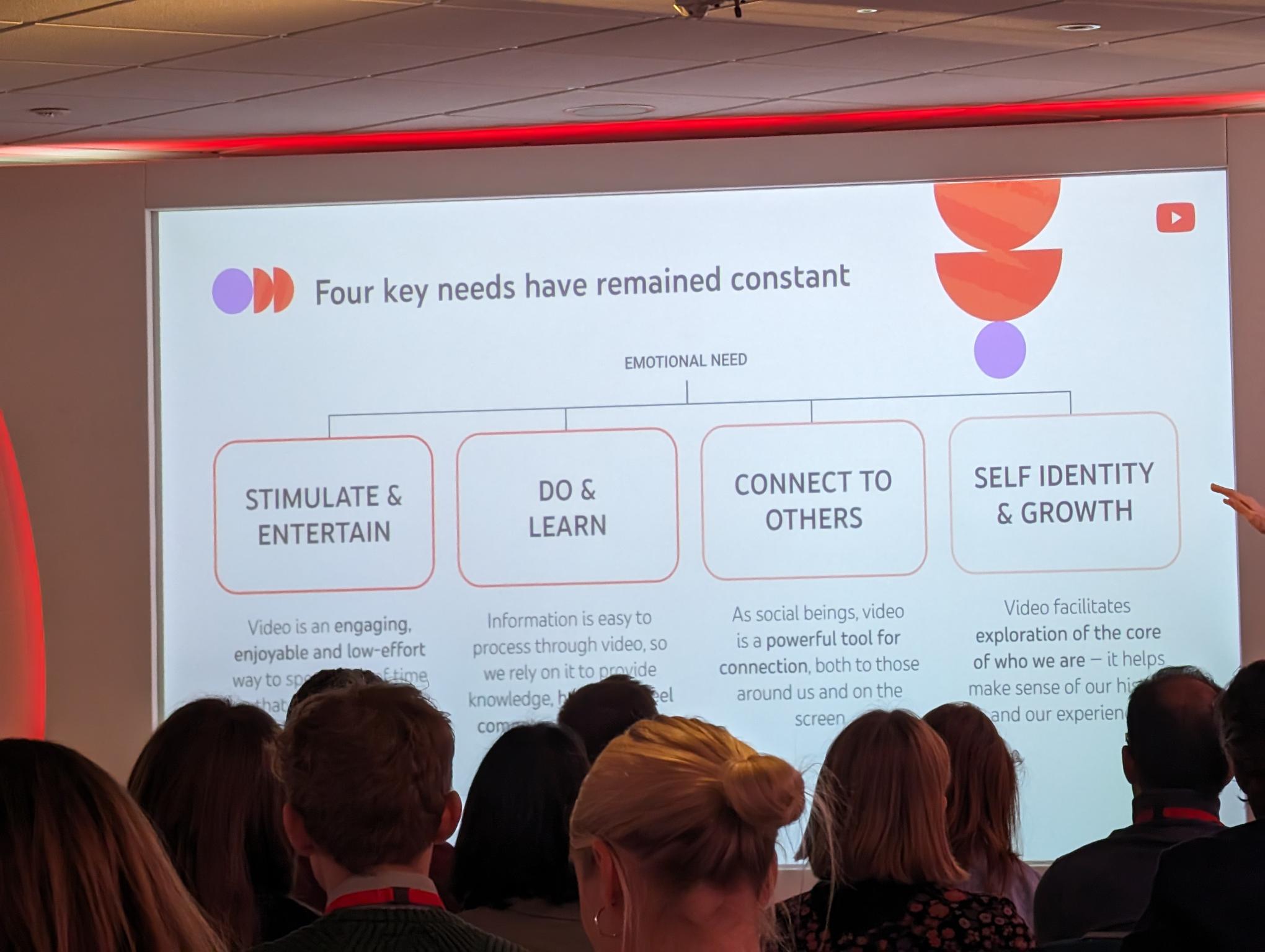TV is accelerating rapidly and it is vital that as an agency we remain ahead of the curve by digesting the valuable insights that are on offer across the industry. Campaign’s TV Advertising Summit provided us with ample information; from how we can utilise measurement and data solutions, to how we can ensure that we make money go that extra mile by placing brands in front of the right audiences.
Why TV still matters
Whilst we find ourselves in an era where streaming services and digital content are hugely prevalent, TV continues to hold its own. Ben Frow, Content Chief, Paramount reminded us that linear is still loved. Despite the rise of on-demand platforms, linear TV remains significant with traditional television networks such as Channel 5 still experiencing weighty viewership numbers. It’s enlightening to know that TV is still able to break through the noise and withstand the ever-evolving media landscape, but we need to remain adaptable to changing viewer habits.
So how can we remain successful within this field? We must ensure we are knowledgeable in the two main areas. Knowing a brand’s audience and its competitors. When people say the customer is always right, the same approach goes to audience views and motivation. We may not always agree with their views, but we have to ensure that we always bear the audience in mind. There are small adaptations that can really capture audiences, for example being explicitly specific by putting a geography such as “Yorkshire” in a programme title will no doubt result in viewers from Yorkshire tuning in.
Frow underscored the power of live TV in developing collective experiences, an element that can be said to be lacking in streaming services. This collective engagement remains a unique strength of linear TV, enhancing the impact of advertising and fostering brand association with compelling content.
Engagement through emotion
In the constantly changing landscape of media consumption Tom Sherwood, Product Lead, Google reminded us why we are drawn to our TV screens. He outlined the four key continuing needs: stimulate & entertain, do & learn, connect to others and self-identity & growth. Keeping these needs in mind can help content creators and advertisers craft more engaging experiences.
Panellists reminded us how TV is often viewed as being a channel with a real pulse. It provides an opportunity for brands to place themselves in moments of emotional engagement, not all mediums can reach viewers in the comfort of their own living rooms. TV allows consumers to resonate with content as visual information is easier to digest, the reaction and conversations that followed ITV’s Mr Bates vs The Post Office is a prime example of how programmes have the ability to capture attention and make viewers lean in.
Brands that associate themselves with regular, consistent TV content can see the effects of positive reinforcement, tapping into viewers routine habits as they tune in to channels at specific times. TV not only enables brands to intertwine their messaging into specific programmes, but also enables them to meet viewers on the platforms that they want to consume, whether that be considered browsing(consciously) or instinctively watching content that appears on feeds (unconsciously).

Cross media measurement in a convergent world
Measuring success in this convergent media landscape comes with various challenges. Thankfully there are many upcoming solutions. Origin, which assists advertisers in understanding campaign coverage by capturing the value of advertising in the regularly changing consumer environment, aims to integrate cross-media measurement to facilitate better-informed decisions for advertisers and agencies. The likes of Amazon, Meta and Google are homing in on quality of impression with factors such as sound on, length of viewability and outcome-based measurement.
As the industry navigates these complexities, the importance of context and content remains central. Origin seeks to provide a standardised framework for evaluating ad effectiveness, though challenges like the lack of BVOD data at the outset and disparities in data richness across platforms persist.
As we look ahead to the remainder of 2024, we will remain vigilant in our approach, bearing in mind the challenges that we may face, and adaptations can be put in place.
Unlocking and understanding CTV’s evolving landscape
CTV’s importance is evident through platforms like BVOD and YouTube, though a current lack in advertiser confidence for planning and buying it will be something to overcome through collaboration and transparency. As SVOD integrates advertising, there’s a resurgence in the potential for 30-second ads, but with linear TV’s decline in January, adaptation is crucial for creatives and brands to navigate between broadcast and addressable mediums, ensuring effective spending by understanding audience behaviour.
The clash between TV audiences and internet users continues and a nuanced approach is essential. While emerging platforms offer niche targeting opportunities, traditional TV maintains its relevance, particularly in reaching broad audiences effectively. Adapting to this evolving landscape requires us to be careful not to be immediately wowed by the technical data that some of the providers are able to give. Instead, we need to make sure that we continue to push hard about the depth of data that is available.
It is clear that the TV landscape still has plenty to offer for brands, remaining a channel full of emotive influence where brands can intertwine their messaging with compelling content. As we look ahead to the rest of 2024, we must carefully balance between embracing innovation and preserving the strengths of traditional television.
Talk To Us
Want to find out how you can accelerate growth? Drop us a line and our team will be in touch.













